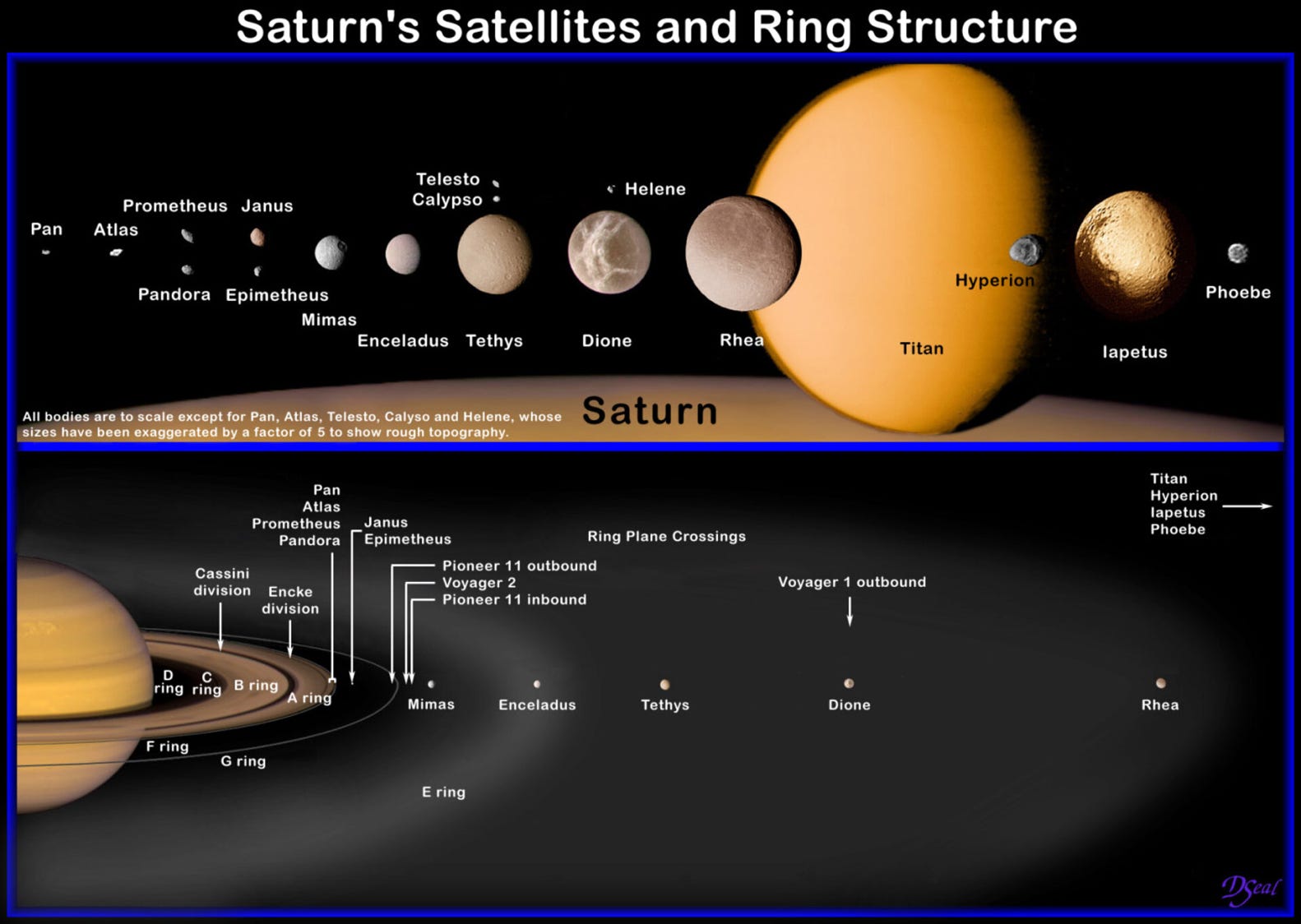by Florin Constantin, PhD student

Credit imagine: NASA/JPL/Caltech
In March, the International Astronomical Union (IAU) has formally recognized the discovery of 128 new moons belonging to Saturn. After this discovery, the total number of moons the planet Saturn has reached 274, the most currently known of any planet in our solar system. A moon is any celestial body naturally formed that orbits another celestial body.
The discovery was made in 2023 by a group of scientists form multiple countries, who used images taken with the Canada-France-Hawaii Telescope. The “new” moons have small diameters of only a few kilometers and have irregular shapes. Many of them also seem to orbit in groups, which can suggest that they share the same origin. For the moment, they were given strings of numbers and letters for names until the official names will be decided. In order to keep with the tradition of using the names of gods, names from the Norse, Inuit and Gallic pantheons are being taken into consideration.
This discovery can provide information into the early period of our solar system, when a plethora of collisions between celestial bodies took place, but to the formation of Saturn’s rings as well.
The complete list of the currently known Saturn’s moons can be found here.